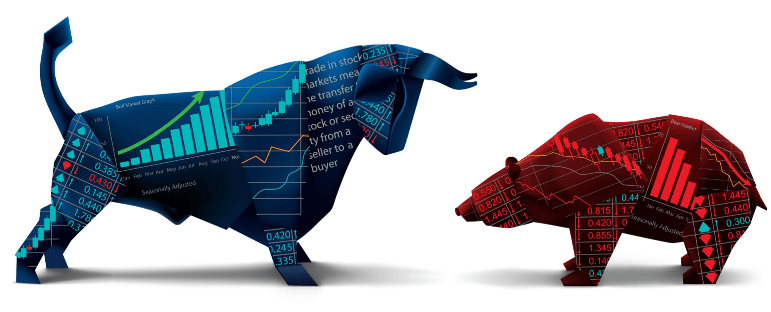With rising interest and speculation in the crypto space, investors’ attention to secondary exposure of Bitcoin has grown tremendously. A new and increasingly popular investment thesis believes a balanced portfolio should not just hold Bitcoin and altcoins but also indirect crypto exposure. I wanted to take some time to share my thoughts on the recent mining stock frenzy that occurred the past few months and lay out some of the facts.
This highly sought-after indirect exposure includes derivatives, publicly listed companies adding Bitcoin to the balance sheet (MicroStrategy and Square), mining companies, and publicly traded trusts. Of the growing list of alternatives, publicly-traded mining companies ie. Riot Blockchain Inc. and Marathon Patent Group have recently contended with major news events for headline space.
The Mining Stock Frenzy
Last November, Riot was trading as low as $3.29 a share and Marathon at $2.10 a share. Both have found recent local tops. They’ve taken a correlated correction with Bitcoin, topping out at $77.9 (RIOT) and $47.9 (MARA) respectively. This resulted in a 2,267% increase and 2,180% increase from their November low to the recent high.
Bitcoin also underwent a massive rally from November 2020. But it only saw a 320% increase, about 7x less than the gains from mining stocks. The massive gains garnered a ridiculous amount of media attention surrounding these two, which prompted me to look deeper.
What Is Bitcoin Mining?
Let’s first start with a background on mining. Any device with an internet connection can mine, but that does not guarantee success or profitability. Miners that offer substantial computing power to the Bitcoin network are rewarded in Bitcoin. Anyone can play, but it’s largely a winner take all game.
Mining Bitcoin effectively is extremely costly, time-consuming, sporadically rewarding, and can require high maintenance. Staying profitable requires upgrading to the newest “rigs” and finding the cheapest electricity possible. These two factors alone often cut out smaller players in the industry. Buying one rig and expecting profit is like opening a mom-and-pop shop next to a Walmart Supercenter. The odds are not in your favor.

Riot and Marathon are unique because they each own a substantial amount of the total mining power of the Bitcoin network. From recent reports, Riot currently controls a little under 1% of the total network mining power. It’s looking to triple their mining power to 3.8 EH/s by October 2021. Marathon’s current mining operation is slightly larger than Riot’s. Globally, it reaches 103,000 miners capable of producing 10.36 EH/s by December 2021.
Just because these companies are highly ambitious does not mean their future dominance is guaranteed. Currently, the global hash rate mining Bitcoin right now reached a high of 175 Ehash/s. And it’s quickly growing with the bull market. Hash rate can be defined as the computational power per second used when mining Bitcoin.
As interest in Bitcoin grows, the mining pool grows too distributing a smaller piece of the pie with each growing member of the network. This puts pressure on smaller companies vying for control when there are currently massive mining pools that control up to 20% of the network (F2 for example).
Sure Profit?
Investors don’t have many options for exposure to Bitcoin mining companies. And investing in these companies comes with a premium just like investing in $GBTC. Since all mining companies are similarly structured, it is likely they will either all turn profitable or continue unprofitable. Right now, rumors are circulating that Riot and Marathon are very close to breaking even. Investors ride on high hopes that 2020 Q4 reports reveal their first quarter of profitability.
But a profitable Q4 does not guarantee continued profitability through 2021. There are still looming concerns around the delivery of machines, a growing network hash rate, debt restructuring, and questionable leadership. These unknown factors and a surging Bitcoin value likely caused the recent increase in company evaluations and speculation. In many ways, these stocks behaved like a 3x Bitcoin accelerator rather than an asymmetric play.
The Bull and Bear Case
If you believe Bitcoin will hit $100,000, you can reasonably make the case that these stocks will once again break all-time highs… Even if the companies teeter-totter back and forth between profitability. As mentioned above, the correlation of these stocks’ values to the movement of Bitcoin has been very strong. If you don’t believe Bitcoin hits $100,000, you can make the case that these stocks have hit their highs and are currently bursting. But the reality is both the value of Bitcoin and the profitability of the company only matter to an extent on the price of these stocks.

Tesla has just had its first year of profitability since its inception in 2003 and has continued its parabolic run with no signs of slowing. Furthermore, a steady Bitcoin price that isn’t necessarily rising could, in theory, result in a profitable mining company and growing stock.
It could also be the case that nothing above this sentence matters except retail demand and hype. In many ways, potentially the best play is to trade the stock as a lagging indicator to the price of Bitcoin. There are many ways to examine these stocks and no particular theory seems more accurate than the next.
Explore Further
If you want to read a more detailed report on this exact topic, read this report that inspired many of the ideas in this blog. Ultimately, it will be your own personal investment thesis and exploration of the above factors that can help you determine if either Riot or Marathon is a good fit for your portfolio. If you do choose to buy, be smart and buy a dip, not when it is increasing 20% a day! If you plan to trade these volatile stocks, here’s how to get started.
